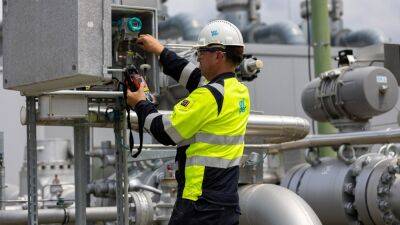Pump it up: UK householders on ditching their gas central heating
T he return of warmer weather could not have come soon enough for households worried about energy bills. For others, the change of season marks the end of their first winter without relying on gas for their heating.
A small number of homes have installed heat pumps, which use electricity to channel warmth from the ground or the air into the home, and could play a major role in cutting carbon emissions from Britain’s homes. The government wants to see 600,000 installed a year to help meet the UK’s climate targets, but the response from the wider public has been tepid at best.
For those who have taken the plunge, the first winter with a heat pump has offered lessons that could help to shape the UK’s move away from gas and oil.
Proper installation is paramount to how well a heat pump functions. Paul Brabbins from Halifax knows this all too well, after he and his partner spent months without adequate heating following a faulty installation.
Motivated by environmental concerns, Brabbins, 75, decided to install a heat pump in his 1930s stone and brick three-bedroom semi last July. “It slotted right in with our green credentials, that was one reason. Then the price of gas had shot right up and they were being advertised. We thought it was probably a good time to change.”
After receiving the government’s £5,000 grant, the air-source heat pump cost him around £7,000. He didn’t have to undertake further insulation work before the installation in his home, which uses radiators rather than underfloor heating. But Brabbins, a retired probation officer, was faced with ongoing problems almost immediately, having to rely on their electric fire and oil heater as temperatures plummeted in the colder months. “At times we had neither hot water
Read more on theguardian.com



















